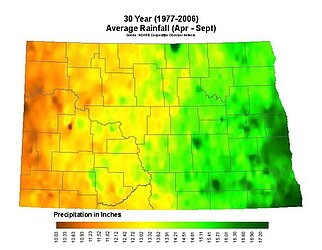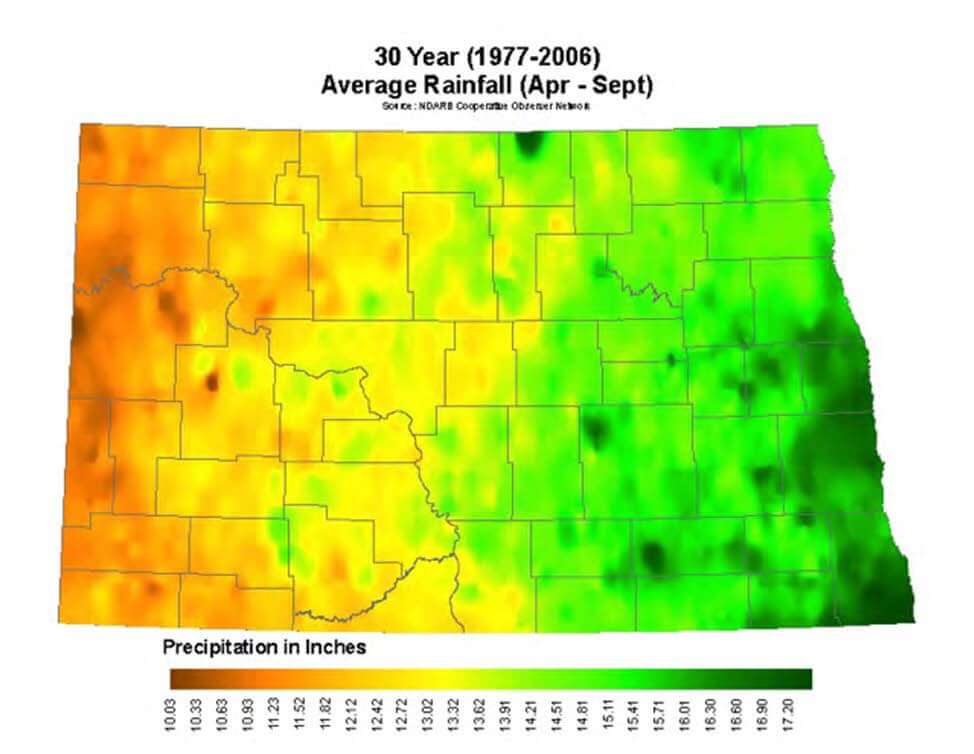Precipitation Evaluation of the North Dakota Cloud Modification Project (NDCMP) using Rain Gauge Observations

Matthew Tuftedal, a Master of Science student in Atmospheric Science, University of North Dakota. Post-Secondary Education: Kalamazoo Valley Community College, Central Michigan University and University of North Dakota
Precipitation Evaluation of the North Dakota Cloud Modification Project (NDCMP) using Rain Gauge Observations
Research Abstract
North Dakota began a weather modification project in the 1950s and a managed cost sharing program in 1976. North Dakota Cloud Modification Project (NDCMP) currently seeds clouds for hail suppression and rain enhancement over Western North Dakota in two areas: a northern section and a southern section. The northern section includes Williams, Burke, Ward, Mountrail, and McKenzie counties, while the southern section includes Bowman and part of Slope counties. NDCMP has been the subject of many previous studies in order to evaluate the projects effectiveness. A study conducted in 1985 found weak evidence of increased rainfall when seeding for hail suppression and no evidence of the effectiveness when seeding for rainfall. For a unique look at the effectiveness of cloud seeding, wheat yields have been analyzed for seeded counties and compared to the non-seeded counties, results found an increase in wheat yields in areas where seeding took place versus the non-seeded area. Another study showed an increase of rainfall between 6 and 9 percent using 1977 to 2004 rain gauge data. Since 2004, additional rain gauge locations have been added in Western North Dakota that enhance the network. The objective of this study is to analyze daily rainfall data from surface observations for 1977-2018 to determine the effects of the NDCMP on rainfall amounts.
Research Highlights
The effectiveness of the North Dakota Cloud Modification Pro-ject (NDCMP) at increasing precipitation is evaluated from 1977 through 2018 using rain gauge observations. Monthly and season-al (June-August) precipitation is averaged to create county-wide target and control area rain amounts. The McKenzie and Bowman operational areas have 7 of 8 double ratios above 1.0 and rainfall increases of up to 12%. Additionally, 2 of the 8 double ratios have a 95% significance of being greater than 1.0. The statistical analysis is constrained by the lack of a robust control due to sparse rain gauge measurements before the start of NDCMP and the lack of a totally independent control area with a similar precipitation pattern. The main conclusion of the research is that even without a carefully designed control, the statistical analysis of 41 years of rain gauge observations indicates that the NDCMP operational weather modification program increases rainfall by up to 12%. With most target/control pairings indicate some rainfall increase, some tests providing 95% confidence in the increase. The software used for data analysis in this project is available at sourceforge.net/projects/evaluationofndcmp-tuftedal2019/ and the project’s data collection is available in the University of North Dakota Scholarly Commons.


David Delene
Office: Clifford Hall Room 420
4149 University Ave Stop 9006
Grand Forks, ND 58202-9006
Telephone: 701-777-4847
Email: delene@aero.UND.edu



